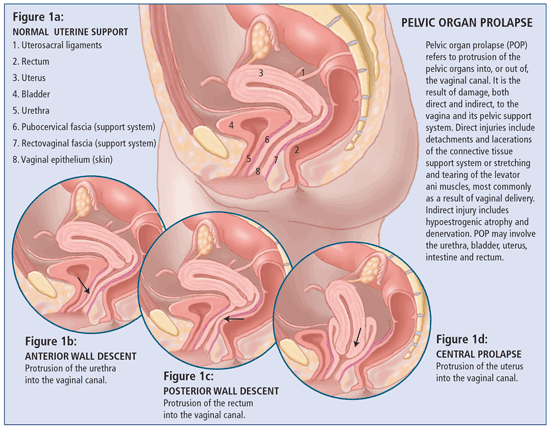Ahmed Al-Badr, MBBS, FRCSC, Clinical Fellow
Harold P. Drutz, MD, FRCSC, Professor and Head of Division, Division of Urogynecology and Pelvic Reconstructive Surgery, Department of Obstetrics and Gynecology, University of Toronto, Mount Sinai Hospital, Toronto, ON.
Pelvic organ prolapse (POP) refers to protrusion of the pelvic organs into, or out of, the vaginal canal. It is the result of damage, both direct and indirect, to the vagina and its pelvic support system. Direct injuries include detachments and lacerations of the connective tissue support system or stretching and tearing of the levator ani muscles, most commonly as a result of vaginal delivery. Indirect injury includes hypoestrogenic atrophy and denervation. POP may involve the urethra, bladder, uterus, intestine and rectum.1 (Figure 1).

Normal Pelvic Support System in Females
It is primarily the pelvic diaphragm, the endopelvic fascia and the vagina that provide support for the pelvic organs (Figures 1 and 2). The pelvic diaphragm is made up of a bilateral paired group of striated, posteriorly fused levator ani muscles and its coverings. The urethra, vagina and the rectum pass through an anterior separation between the levator ani, called the levator hiatus, as they exit the pelvis (Figures 3 and 4).